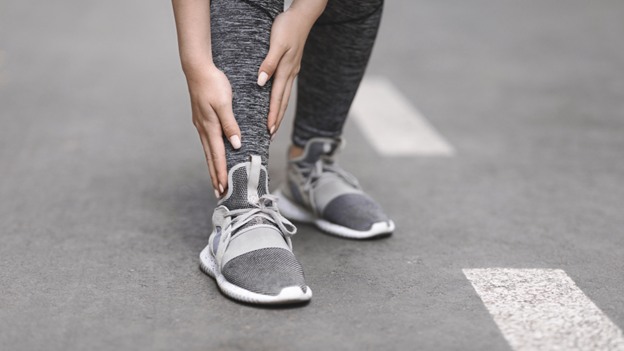
Shin splints treatment: getting back on your feet.
Embarking on a fitness journey can be invigorating, but sometimes, the road includes unexpected challenges like shin splints. In this comprehensive guide, we discuss everything you need to know about shin splints – what they are, how you treat them and tips to keep them at bay.
Let's get you back on your feet and back into your stride!
What are shin splints?
Though common among athletes and fitness enthusiasts, shin splints can be a real hurdle in the pursuit of wellness.
Shin splints are painful sensations along the inner edge of your shinbone (tibia) and are often a result of overuse, improper footwear or changes in physical activity.
Common shin splint symptoms may include:
- Tenderness
- Swelling
- Dull ache
To understand the anatomy of a shin splint, consider the stress that is placed on your shin during high-impact activities like running or jumping. The muscles, tendons and bone tissue may become overworked, leading to inflammation and the telltale pain of shin splints.
How to treat shin splints.
Dealing with shin splints requires a multifaceted approach, combining restorative measures with targeted exercises.
Here's a step-by-step guide to treating shin splints.
- Rest and ice. Begin by giving your legs ample rest. Ice the affected area for 15-20 minutes every few hours during the initial days of discomfort. This helps reduce inflammation and alleviates pain.
- Compression and elevation. Utilize compression sleeves to support the affected leg and reduce swelling. Elevating your legs when resting aids in the drainage of excess fluid, contributing to the healing process.
- Strengthening exercises. Engage in low-impact exercises that strengthen the muscles around your shin. Focus on calf raises, toe taps and ankle circles to improve flexibility and prevent future occurrences.
- Proper footwear. Evaluate your footwear to ensure proper support and cushioning. Ill-fitting or worn-out shoes contribute to shin splints. Invest in quality athletic shoes that cater to your specific activities.
- Gradual return to activity. Resume physical activities gradually after recovery. Avoid sudden increases in intensity or duration, allowing your body to adapt and reduce the risk of recurrent shin splints.
Tips for preventing shin splints.
Prevention is the best medicine, and when it comes to shin splints. Consider the following tips to keep them at bay:
- Proper warm-up. Prioritize a thorough warm-up routine before engaging in strenuous activities. This prepares your muscles and joints for the demands of exercise, reducing the likelihood of shin splints.
- Cross-training. Incorporate cross-training activities to vary the stress on your muscles. This prevents overuse and offers a well-rounded fitness regimen.
- Stretching routine. Implement a regular stretching routine, focusing on the calves, shins and Achilles tendon. Improved flexibility contributes to reduced strain during physical activities.
- Pay attention to your exercise surface. Choose softer surfaces, when possible, especially if engaging in high-impact activities like running.
- Professional assessment. If you experience persistent discomfort, seek medical advice at your local CityMD. They can identify potential issues and guide you toward personalized preventive measures.
Are you dealing with persistent shin splints? Don't let discomfort slow you down.
Visit CityMD urgent care today for expert evaluation and personalized treatment plans to get you back on your feet. Our experienced healthcare professionals are here to provide the care and guidance you need for a swift recovery.
Schedule your appointment now and step confidently into a pain-free tomorrow.

We’re ready to care for you.
Visit any CityMD urgent care location in your community today for an evaluation with one of our expert providers.